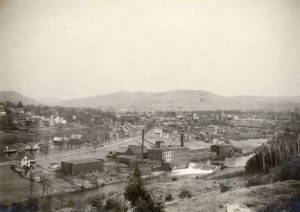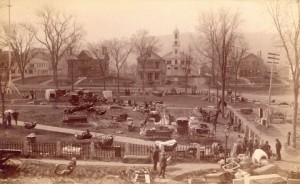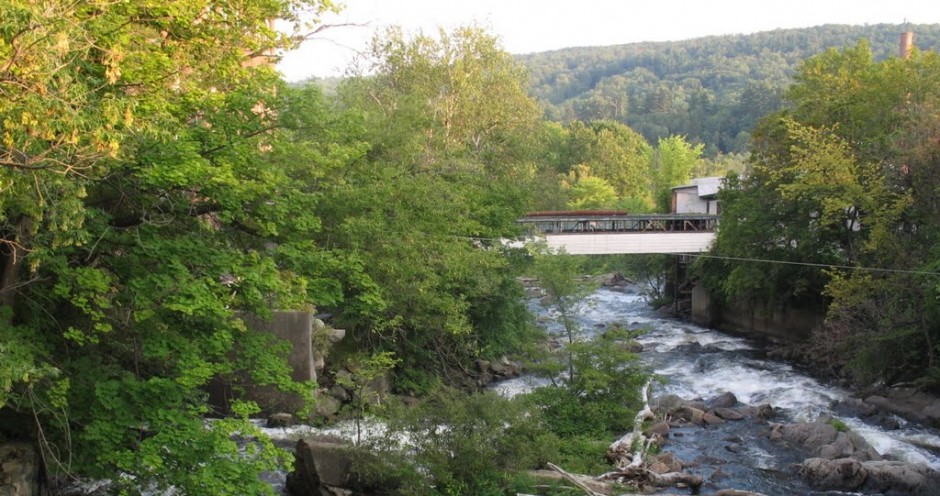This section of the site highlights some key events in Lebanon’s history. Understanding Lebanon’s past will be helpful in contextualizing this dam proposal. Lebanon was founded in 1761 and soon after, the first sawmill was put in. For much of the 1800’s sawmills and nail making factories were the main industries in Lebanon. Around the turn of the 19th century, huge infrastructure was put into place. including roads connecting Lebanon to larger towns and bridges over the Mascoma river. These creations combined with the numerous mills and factories made Lebanon a thriving industrial town. In 1820, the town of Lebanon had more major sawmills (6) than doctors (3). In 1866, the town even passed a resolution to invite even more manufacturing companies into town. It is clear that Lebanon was very much a town built around mills and manufacturing.

The Mascoma Mill around 1915 using the river to help in the manufacturing process (photo courtesy of the Lebanon Historical Society)
All of this manufacturing helped Lebanon’s economy, but in 1887, a fire started in one of the factories and leveled most of the central city district (see the maps tab for a visual showing of the damage).

A photo taken the day after the Great Fire of 1887 (photo courtesy of the Lebanon Historical Society)
However, this one fire did not deter the town, and new manufacturing plants were built. Up until 1950, Lebanon’s relationship with the river was mainly using it in the manufacturing process.
Like many industrial towns, Lebanon has been hit hard by outsourcing and technological advances–manufacturing is no longer the largest industry in town. Today, Lebanon is home to two major hospitals (Dartmouth-Hitchcock and Alice Peck Day) and companies that go along with hospitals such as large laundry companies. This shift away from manufacturing has made the town of Lebanon less connected with the river– gone are the days when almost everyone worked in mills or factories right alongside the river.
According to Lebanon City Planner David Brooks, some people who drive through the town don’t even know that the beautiful Mascoma river runs right through it. As Lebanon looks to revitalize its downtown area, possibly by building an arts promenade, City Planner Brooks hopes to make the river a central part of the city once again. The information in this brief history comes mostly from the Lebanon historical society. To see the entire Lebanon historical society timeline click here. It is important to understand the history of Lebanon and its changing relationship with the river because it sets the scene for how the dam may be received.
